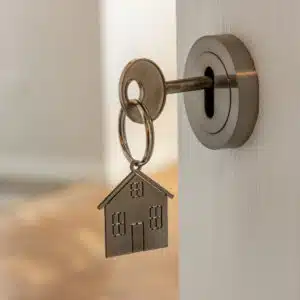According to the Federal Reserve Bank of Richmond, the current economic climate in Maryland is being impacted by several different factors.
Unemployment is declining and payroll is on the incline, but the housing market’s signals are less clear. Whether you’re considering moving within the state or living in Maryland for the first time, these multifaceted data points may determine the affordability and rates of your loan.
Where raw house prices are concerned, Maryland is on a steady upward trend. The median value of a home in Maryland is currently $286,700, according to Zillow. That number is lower than the national median and average prices reported by the Census Bureau at $309,700 and $395,00, respectively.
Whether the state will stay affordable is unclear, as Zillow pointed out, the price for a home has risen by 4.8 percent in a year and is set to keep rising at the same pace. On a less positive note, 12.3 percent of mortgages in Maryland are “underwater.”
House values are very much dependent on location within the state. While it costs a median of $400,000 to buy a house in Annapolis and $390,000 in Columbia, Baltimore is a different story at $121,000. Many mid-sized cities lie between these two poles.
Current Mortgage & Refinancing Rates in Maryland
4 Critical Elements That Affect Mortgage Rate & Refinance Rates in Maryland

Considering only one provider or loan product won’t give you the full picture regarding present rates and costs in Maryland. Comparing deals and understanding how to get the best rates can save you hundreds, or even thousands, of dollars each year.
Some of the factors affecting rates, such as the different levels of housing demand in various parts of the state or region, are out of your hands and will impact your purchase no matter what kind of product you choose and which company you work with.
Others are far more variable, however, and it pays to familiarize yourself with these. The following are four factors affecting mortgage and refinancing rates in Maryland now:
The size of your loan
Smaller loans, ones under a value set by Fannie Mae and Freddie Mac, will have different rates than jumbo loans that exceed the figure.
According to Home Buying Institute, while it was once common for smaller loans to have more affordable rates, jumbo loan rates have fallen, and it’s unwise to assume a loan will have an unaffordable rate because it’s larger.
Since home prices can spike in high-demand municipalities, there are some areas where jumbo loans are relatively common. Buying a home in such communities may be simplified by the relatively low current jumbo rates.
Your down payment amount
Can you pay more than 20 percent of your loan value up front as a down payment? Lenders tend to consider this mark to be the threshold of several favorable results that can improve your borrowing experience.
For instance, mortgage insurance is typically required for low down payments, adding an extra recurring cost. Borrowers able to provide a substantial down payment amount can often forgo those costs and will end up paying less over the life of their loan.
Interestingly, the Consumer Financial Protection Bureau added that interest rates might be lower if you pay slightly less than 20 percent as your down payment. Lenders, reassured by borrowers having mortgage insurance, could offer these improved rates as an incentive.
The CFPB noted, however, that the savings caused by the lower rate may be offset by the insurance and it pays to look closely at overall borrowing cost.
Paying “points” on the loan
There is another way to spend extra money at the beginning of a loan term and save more over the life of it. The CFPB and HBI both note the potential effectiveness of buying interest points when you close on a loan.
This essentially means paying interest at the start of the loan term. For each one percent or point you pay at the beginning of the loan, you lower your long-term costs. Some lenders will give preferential rates to borrowers who pay points.
A loan’s type
There is more than one way to secure a loan, and the differences go beyond fixed- and adjustable-rate mortgages. The government backs several plans that offer special terms for homeowners who fit into specific categories and finding a lender that offers one of these mortgage types may be an ideal way to secure a preferential rate.
There are special loan types offered by the U.S. Department of Agriculture designed to make it easier to buy a home in a small town. Veterans or present military personnel and family members have an expanded slate of options from the Department of Veterans Affairs.
The Federal Housing Authority backs loans specifically designed to make homeownership possible for individuals and families unable to afford large upfront costs.
How to Get the Best Mortgage & Refinancing Rates in Maryland
Rates don’t just vary from one state to another; there are differences even within Maryland’s borders. Depending on the lender you work with, the type and term of the loan you’re interested in, special circumstances regarding your eligibility, and other important details, you may end up paying significantly more or less over the term of the loan.
The CFPB laid out the variety of rates available to borrowers in Maryland. For borrowers with a credit score between 680 and 699, rates begin at 4.75 percent and go as high as 5.875 percent. For the 700-719 credit score range, the high point is 5.75, and more lenders are willing to offer 4.75 percent.
The disparity between states’ differing rates gets greater at lower credit scores. Having a good idea of one’s particular credit and financial situation and then comparing offers from various lenders is the most disciplined and effective approach to shopping for a loan.
Although the initial research can be time-consuming, it can be beneficial for negotiating with lenders to obtain a better rate and save more over time.
Recommended Companies in Maryland
Once you have determined the size and location of the house you want, your financial circumstances, and your payment preferences, the pros and cons of working with different organizations will become clear. The following four mortgage lenders are recommended for those shopping for loans in Maryland:
- J.G. Wentworth – This lender is active in many East Coast states, Maryland included. You can check potential rates online using the company’s lookup tool. By asking for the cost, zip code, and type of property you’re seeking, this tool provides you with a clearer picture of how rates can change based on many factors. You’ll then be able to see multiple loan options designed to get you the house of your dreams.
- Rocket Mortgage – Rocket is good for borrowers who want a quick and streamlined mortgage process. Rocket is designed to be used entirely online, with everything from financial disclosure to approval and customization carried out digitally. You customize the loan product you want on the website to see the available rates.
- Ally Bank – Thanks to their online comparison tool, researching rates offered by Ally Bank is easier than it is with other competitors. Of course, there will be differences between these loan examples and the real thing, as rates change due to individual circumstances. It must be noted that Ally uses an excellent credit profile in California as the default example.
- North American Savings Bank – NASB is active across the country and makes a point of promoting its services regarding low-cost loans for individuals seeking specific kinds of products like VA loans, FHA loans, and more. Rates will vary between these products and standard loans.







